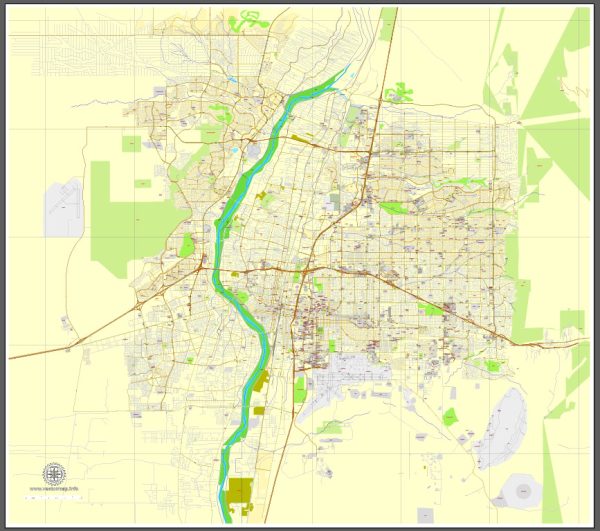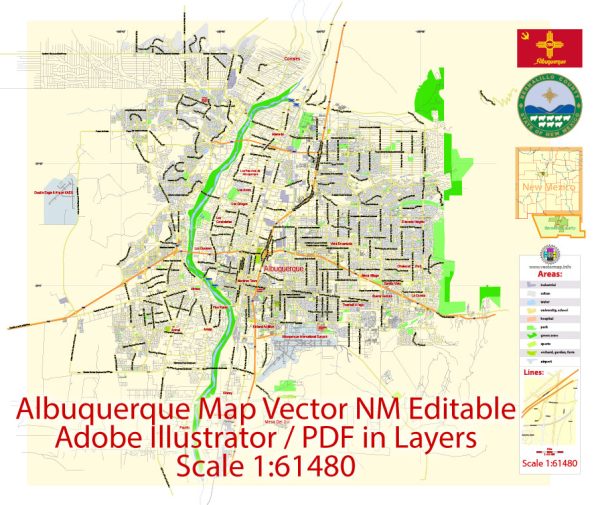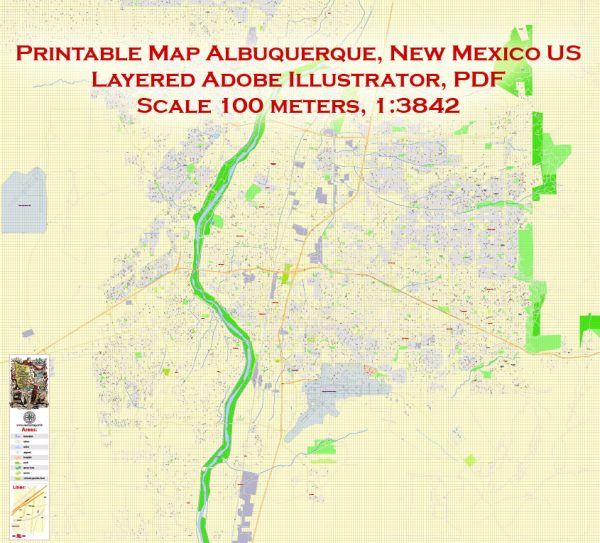The urban development of Albuquerque, New Mexico, has a rich history that reflects the city’s unique blend of Native American, Hispanic, and Anglo cultures. Here’s an overview of Albuquerque’s history of urban development:
- Native American Roots: Albuquerque’s history dates back to the pre-Columbian period when various Native American tribes, including the Pueblo people, inhabited the region. The city’s name is derived from the Spanish “Alburquerque,” named after the Duke of Alburquerque, who was a viceroy of New Spain.
- Spanish Colonial Era: In 1706, the Spanish established a colonial outpost in the area that would become Albuquerque. The city was strategically located along the Camino Real, a trade route that connected Mexico City to Santa Fe. This period saw the development of a Spanish-style plaza, which remains a central feature of the city today.
- Mexican Period: After Mexico gained independence from Spain in 1821, Albuquerque became part of the Mexican territory of Santa Fe de Nuevo México. During this time, trade and ranching played significant roles in the local economy.
- American Territorial Period: In 1846, the United States took control of the territory as a result of the Mexican-American War. The city continued to grow and develop, especially with the arrival of the Atchison, Topeka, and Santa Fe Railway in the late 19th century.
- Railroad Boom: The arrival of the railroad in 1880 had a profound impact on Albuquerque’s growth. It transformed the city into a major transportation and trade hub. As a result, the city expanded along the railroad lines, leading to the development of the “New Town” district, which is now part of the downtown area.
- Adobe and Territorial Architecture: The traditional adobe architecture of the region is a prominent feature of many older buildings in Albuquerque. This style, with its thick walls and flat roofs, is well-suited to the desert climate. As the city developed, Territorial-style architecture also became popular, featuring elements like pitched roofs and wooden detailing.
- Route 66 and Post-War Growth: In the mid-20th century, Albuquerque benefited from its location along the historic Route 66, which brought travelers and tourists to the city. The post-World War II period saw suburban expansion and the construction of modern amenities, including shopping centers and schools.
- Modern Urban Planning: In the latter half of the 20th century, Albuquerque continued to grow, and urban planning efforts aimed to accommodate this growth while preserving the city’s cultural heritage. Today, the city features a mix of architectural styles, from historic adobe structures to modern buildings.
- Cultural Diversity: Albuquerque’s urban development is also shaped by its diverse population, which includes Native American, Hispanic, Anglo, and other ethnic groups. This diversity is celebrated in cultural events, festivals, and the city’s distinct neighborhoods.
- Economic and Technological Development: Albuquerque is home to several research institutions, including Sandia National Laboratories and the University of New Mexico. The city has also seen growth in the high-tech industry, particularly in the fields of aerospace, defense, and renewable energy.
Albuquerque’s history of urban development reflects its position as a crossroads of cultures and a hub of trade and transportation in the American Southwest. The city’s unique blend of traditions, architecture, and economic development continues to shape its identity and growth in the 21st century.




 Author: Kirill Shrayber, Ph.D.
Author: Kirill Shrayber, Ph.D.